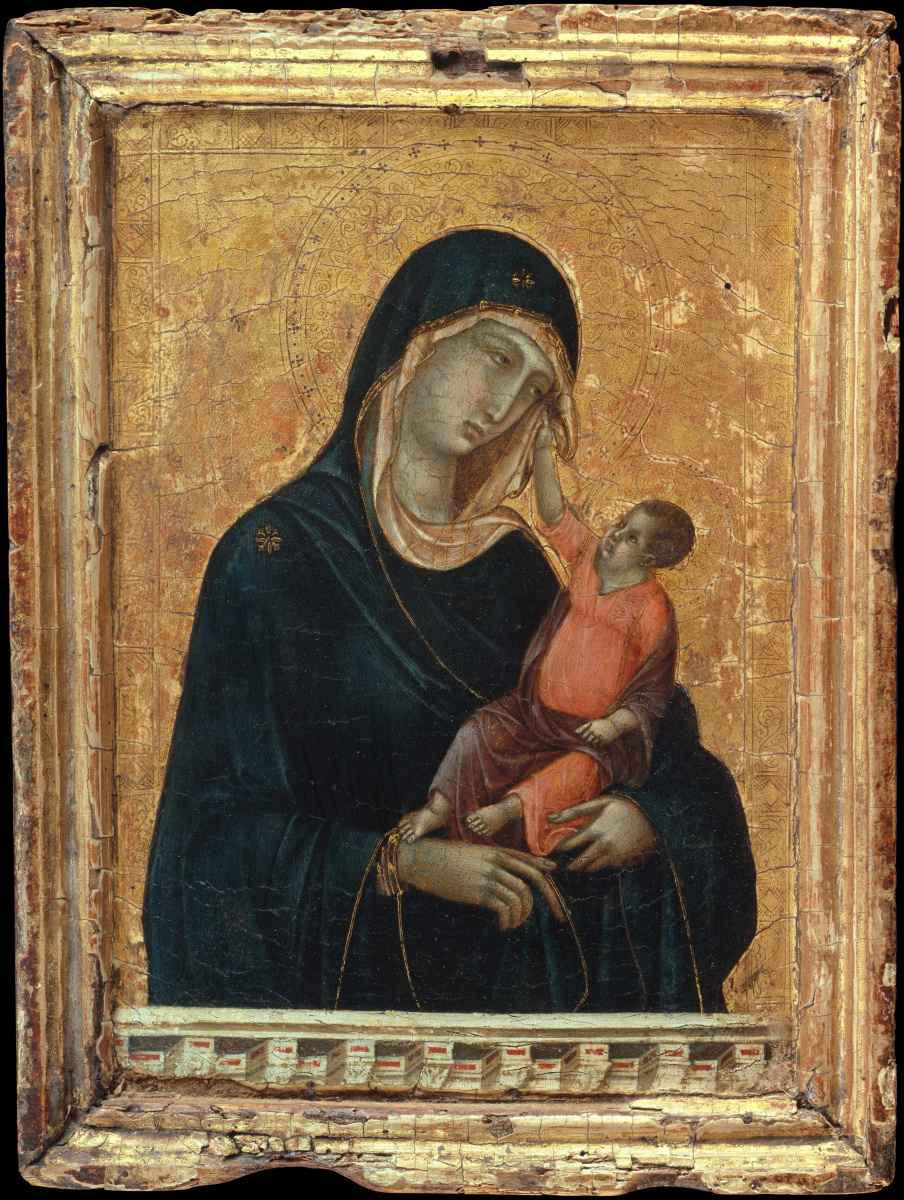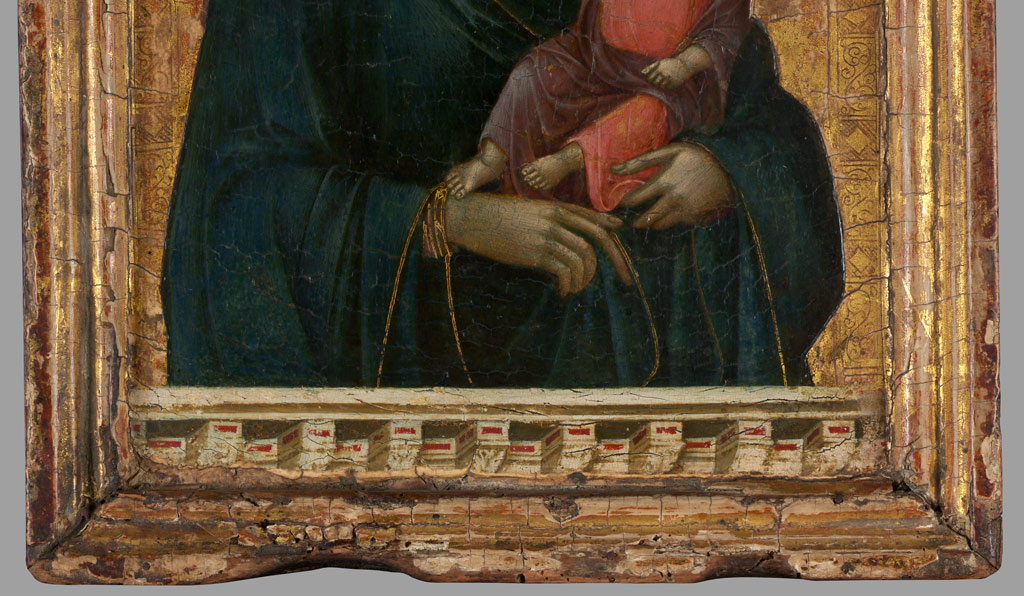log in
Enter site
Login to use Arthive functionality to the maximum
Madonna and child (Madonna Stroganoff, Stoclet Madonna)
Duccio di Buoninsegna • Icon painting, 1300, 27×21 cm
Description of the artwork «Madonna and child (Madonna Stroganoff, Stoclet Madonna)»
Small in size "Madonna and child" attributed to brush Duccio di Buoninsegna, has come to the attention of the wide public only in 1904, when the exhibition in Siena it was presented to the count Grigory Stroganov. And exactly one hundred years later, in 2004, "the Stroganoff Madonna" became the most expensive ($45 million) at the time acquisition in the history of the new York Metropolitan Museum.
Why "Madonna Mladeze" became known as the "Stroganoff Madonna"
Grigoriy Sergeyevich Stroganov, a Russian aristocrat and a famous collector who found the "Madonna and child" in one of antique shops of the Tuscan countryside in the early twentieth century. Recognizing a masterpiece, very early, Stroganov ordered the restoration of all stages which was watched in person. He attributed his acquisition of a work by Duccio di Buoninsegna. In art circles, the emergence of a new, not known (or rather, known only through the text descriptions) Duccio became a major sensation. However, attribution Stroganoff still nobody challenged. Serious experts analyze the place of a picture in the creative evolution of the artist, and it is called "the Stroganoff Madonna" (not to be confused with other "Stroganoff Madonna" - picture of Agnolo Bronzino "Holy family with the infant John").
Subsequently the picture became known as the "Stoclet Madonna" by the name of the next owner, a Belgian industrialist and banker Adolphe Stoclet.
Artistic originality and the novelty of the "Stroganoff Madonna"
The appearance of Madonna in this painting Duccio plays physiognomic features characteristic of the Byzantine (kominowski) painting: narrow eyes, elongated oval, a characteristic "Byzantine" nose. However, there are striking non-canonical details – for example, the Infant Christ hand supports maphory (boards that cover) the mother of God. An important compositional feature is the motif of the parapet in the foreground. According to British art historian John white, the parapet – "the first and only predecessor of a long line of Italian Madonnas have a balustrade" (many of these, for example, Giovanni Bellini).
Author: Anna Yesterday
Why "Madonna Mladeze" became known as the "Stroganoff Madonna"
Grigoriy Sergeyevich Stroganov, a Russian aristocrat and a famous collector who found the "Madonna and child" in one of antique shops of the Tuscan countryside in the early twentieth century. Recognizing a masterpiece, very early, Stroganov ordered the restoration of all stages which was watched in person. He attributed his acquisition of a work by Duccio di Buoninsegna. In art circles, the emergence of a new, not known (or rather, known only through the text descriptions) Duccio became a major sensation. However, attribution Stroganoff still nobody challenged. Serious experts analyze the place of a picture in the creative evolution of the artist, and it is called "the Stroganoff Madonna" (not to be confused with other "Stroganoff Madonna" - picture of Agnolo Bronzino "Holy family with the infant John").
Subsequently the picture became known as the "Stoclet Madonna" by the name of the next owner, a Belgian industrialist and banker Adolphe Stoclet.
Artistic originality and the novelty of the "Stroganoff Madonna"
The appearance of Madonna in this painting Duccio plays physiognomic features characteristic of the Byzantine (kominowski) painting: narrow eyes, elongated oval, a characteristic "Byzantine" nose. However, there are striking non-canonical details – for example, the Infant Christ hand supports maphory (boards that cover) the mother of God. An important compositional feature is the motif of the parapet in the foreground. According to British art historian John white, the parapet – "the first and only predecessor of a long line of Italian Madonnas have a balustrade" (many of these, for example, Giovanni Bellini).
Author: Anna Yesterday



